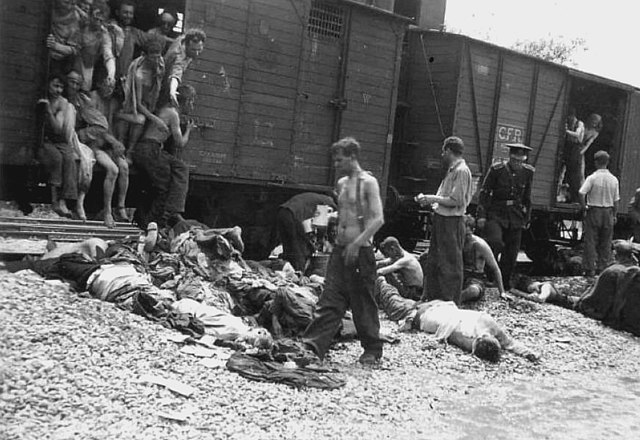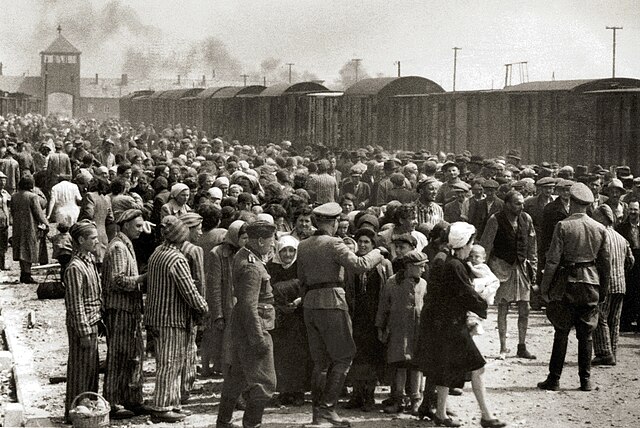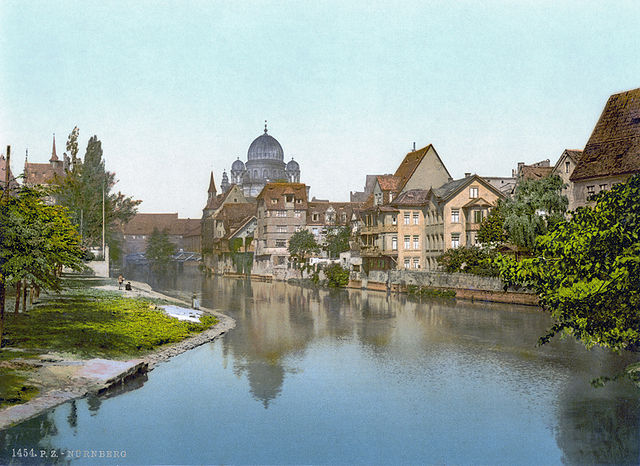The Holocaust in Romania was the development of the Holocaust in the Kingdom of Romania. Between 380,000 and 400,000 Jews died in Romanian-controlled areas, including Bessarabia, Bukovina and Transnistria. Romania ranks first among Holocaust perpetrator countries other than Nazi Germany.
Bodies being thrown down from a train carrying deported Jews from Iași
Deported Jews killed near Podilsk (Romanian: Bârzula), then under Romanian control
Synagogue in Bucharest after it was set on fire during a pogrom, January 1941
Romania issued special IDs for Jews during the war. Such paperwork prevented its holder from being deported to labor camps.
The Holocaust was the genocide of European Jews during World War II. Between 1941 and 1945, Nazi Germany and its collaborators systematically murdered some six million Jews across German-occupied Europe, around two-thirds of Europe's Jewish population. The murders were carried out primarily through mass shootings and poison gas in extermination camps, chiefly Auschwitz-Birkenau, Treblinka, Belzec, Sobibor, and Chełmno in occupied Poland. Separate Nazi persecutions killed a similar or larger number of non-Jewish civilians and POWs; the term Holocaust is sometimes used to refer to the persecution of these other groups.
Jews arriving at Auschwitz II in German-occupied Poland, May 1944. Most were selected to go to the gas chambers.
View of the Pegnitz River (c. 1900) with the Grand Synagogue of Nuremberg, destroyed in 1938 during the November pogroms
1919 Austrian postcard showing a Jew stabbing a German Army soldier in the back
Territorial expansion of Germany from 1933 to 1941








